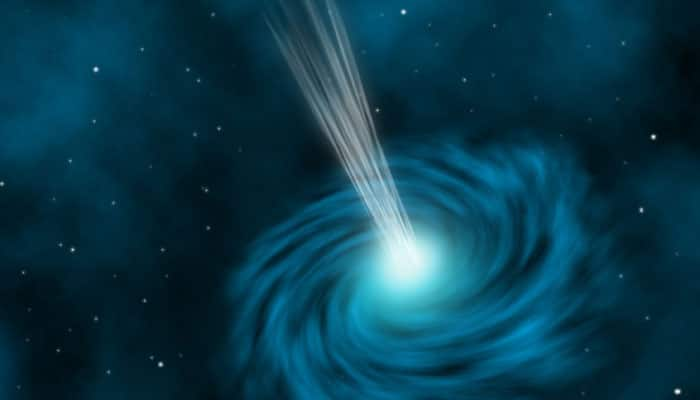Washington: A new research has revealed that pulsars' intermittent light allows scientists to verify Einstein's theory of relativity, especially when these objects are paired up with another neutron star or white dwarf that interferes with their gravity.
However, this theory could be analysed much more effectively if a pulsar with a black hole were found, except in two particular cases, according to researchers from Spain and India.
Pulsars are very dense neutron stars that are the size of a city (their radius approaches ten kilometres), which, like lighthouses for the universe, emit gamma radiation beams or X-rays when they rotate up to hundreds of times per second and these characteristics make them ideal for testing the validity of the theory of general relativity, published by Einstein between 1915 and 1916.
Researcher Diego F. Torres from the Institute of Space Sciences (IEEC-CSIC) explained that pulsars act as very precise timekeepers, such that any deviation in their pulses can be detected and if they compare the actual measurements with the corrections to the model that they have to use in order for the predictions to be correct, they can set limits or directly detect the deviation from the base theory.
These deviations can occur if there is a massive object close to the pulsar, such as another neutron star or a white dwarf, which can be defined as the stellar remnant left when stars such as our Sun use up all of their nuclear fuel.
The binary systems, comprised of a pulsar and a neutron star (including double pulsar systems) or a white dwarf, have been very successfully used to verify the theory of gravity.
Last year, the very rare presence of a pulsar (named SGR J1745-2900) was also detected in the proximity of a supermassive black hole (Sgr A*, made up of millions of solar masses), but there is a combination that is still yet to be discovered, that of a pulsar orbiting a "normal" black hole, that is, one with a similar mass to that of stars.
Until now scientists had considered this strange pair to be an authentic "holy grail" for examining gravity, but there exist at least two cases where other pairings can be more effective.
The study is published in the Journal of Cosmology and Astroparticle Physics.
















